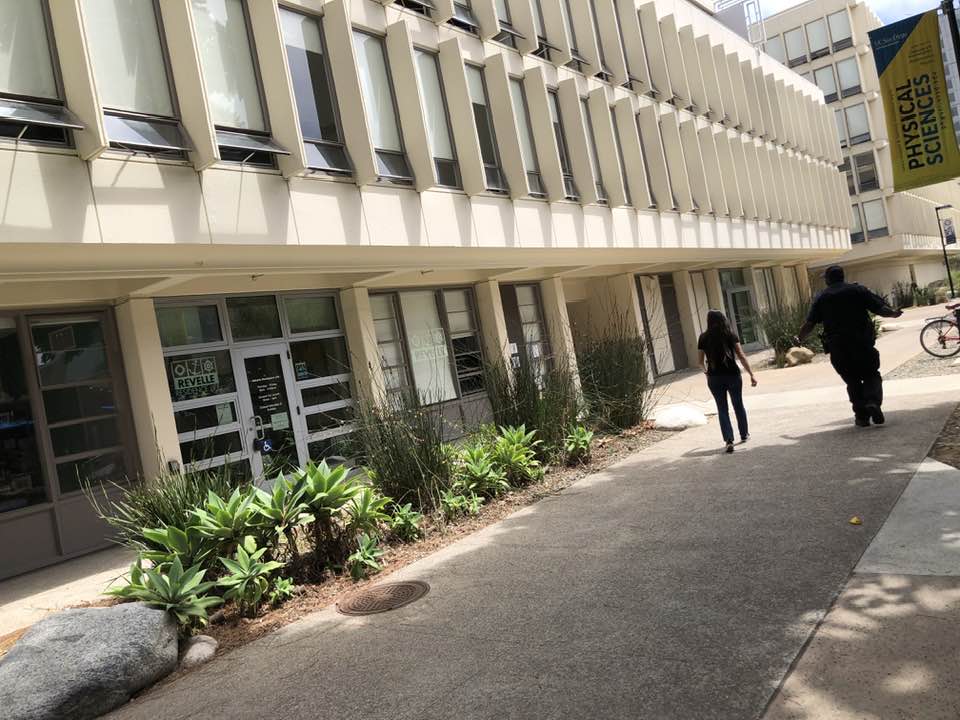
Groucho Marx said he’d refuse to join a club that would have him as a member. I’m an alumnus of a university that wouldn’t have me as a student if I applied today, at least with my 1973 stats. Back then, grades notwithstanding, a not especially distinguished combined minimum SAT score gave California residents their pick of the you-sees. I wanted San Diego, and I squeaked through. The squeak was deafening.
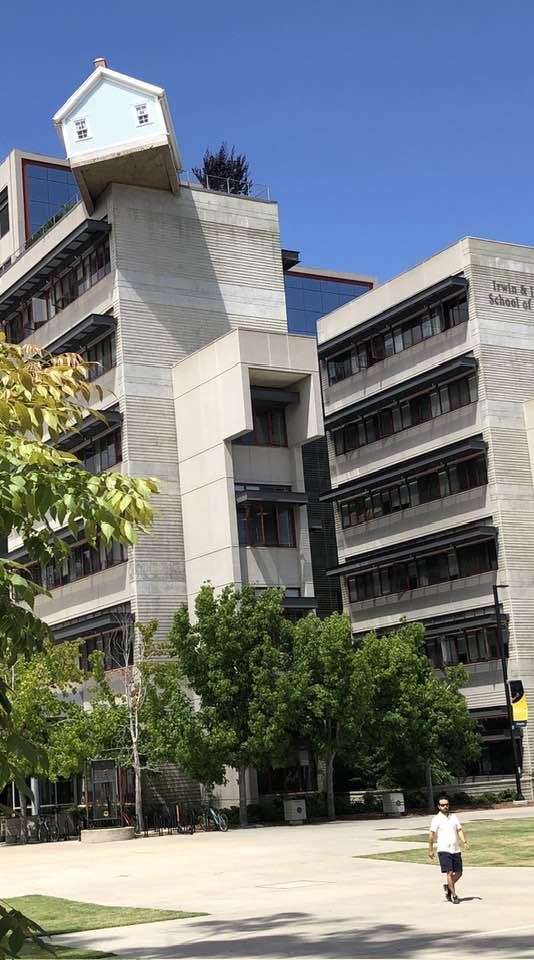 Founded in 1960, UCSD is essentially a mission of Scripps Institution of Oceanography, whose director envisioned a high-octane research campus with graduate students only. Calling it UC La Jolla, after the affluent neighborhood it occupies, was ruled out because of its notorious racist coveUCnants, especially against Jews. UCSD admitted its first undergraduates in 1964, just in time for the shank of the sixties.
Founded in 1960, UCSD is essentially a mission of Scripps Institution of Oceanography, whose director envisioned a high-octane research campus with graduate students only. Calling it UC La Jolla, after the affluent neighborhood it occupies, was ruled out because of its notorious racist coveUCnants, especially against Jews. UCSD admitted its first undergraduates in 1964, just in time for the shank of the sixties.
Soon radical professor Herbert Marcuse, his graduate student Angela Davis, and demonstrations for civil and farmworker rights and against the Vietnam war were getting the headlines instead of Scripps’ director Robert Revelle (who helped discover the greenhouse effect) and nuclear physicist and arms control advocate Herbert York. Those names give you a sense of how quickly my young school became famous. San Diego’s business and political elites worried when the campus tilted left. Some even tried to buy out Marcuse’s contact.
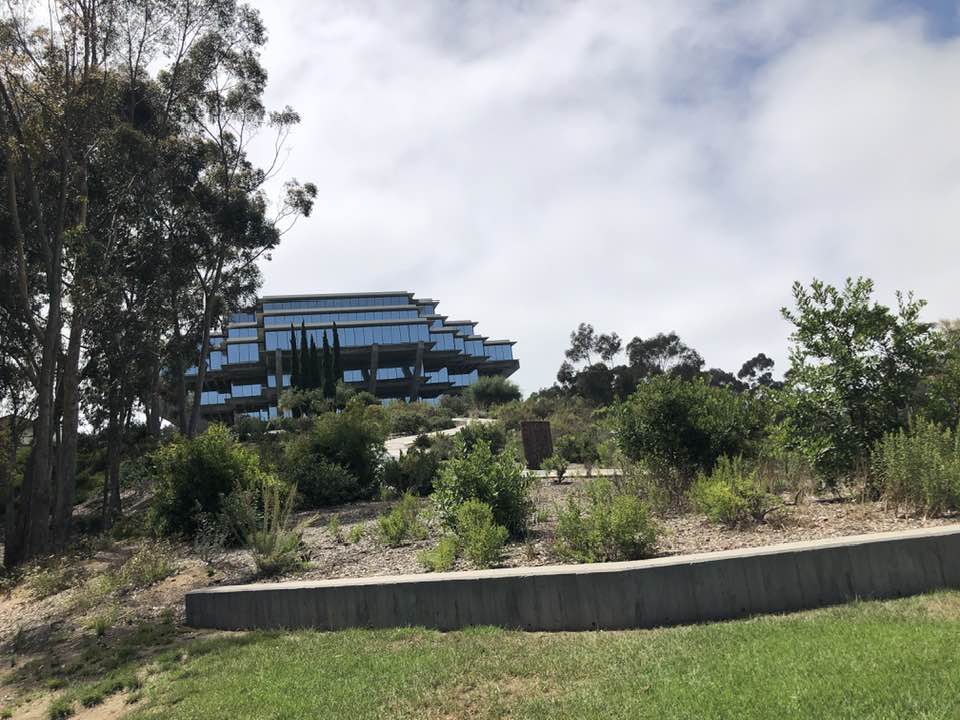 I remember long walks from class to class through eucalyptus groves. Long-term planners had no doubt already plotted their demise. Wandering around campus yesterday, I counted at least eight new buildings going up, most of them high-rises. With all the construction cranes, it looks like Shanghai in 1995. UCSD now has 34,000 undergraduates compared to under 10,000 in my day. In-state fees and tuition are nearly $15,000 a year ($500 for me!), still a relative bargain for those who squeak through, given what’s on offer — eight Oxford-style residential colleges, world-renowned academic programs, theaters, art galleries, music venues, and much-improved bling.
I remember long walks from class to class through eucalyptus groves. Long-term planners had no doubt already plotted their demise. Wandering around campus yesterday, I counted at least eight new buildings going up, most of them high-rises. With all the construction cranes, it looks like Shanghai in 1995. UCSD now has 34,000 undergraduates compared to under 10,000 in my day. In-state fees and tuition are nearly $15,000 a year ($500 for me!), still a relative bargain for those who squeak through, given what’s on offer — eight Oxford-style residential colleges, world-renowned academic programs, theaters, art galleries, music venues, and much-improved bling.
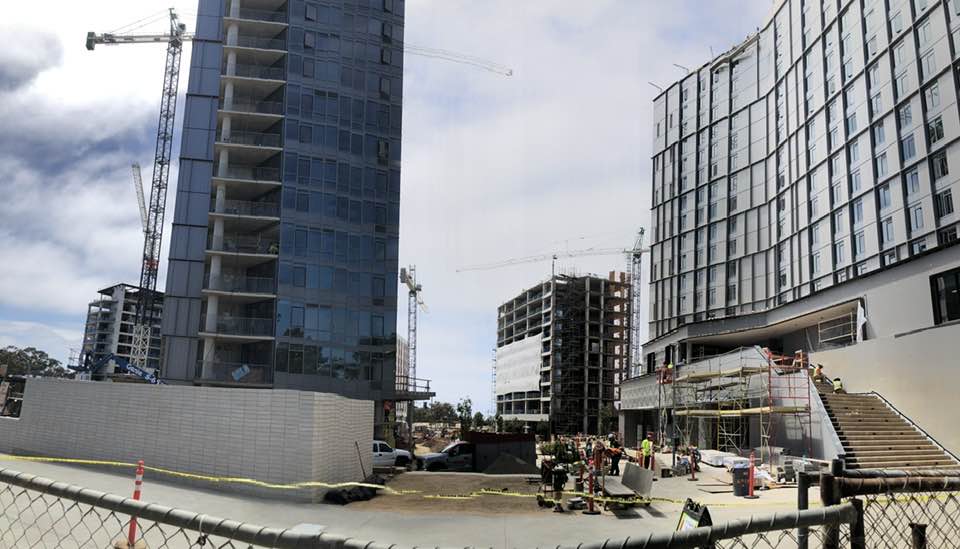 I brought my campus report to dinner in Old Town with Shauna Stokes and Mark Stadler, my fellow campus newspaper editors. With our friend and colleague David Eisen, we’ve been meeting one or twice a month on Zoom. Like college athletes and thespians, we love to tell our war stories. In the late seventies, journalism had considerable post-Watergate gloss. We broke stories and piously expressed our opinions in the first-person plural. Record companies even sent us albums to review, which is why I may have heard Dylan’s “Blood On The Tracks” before most of my fellow boomers.
I brought my campus report to dinner in Old Town with Shauna Stokes and Mark Stadler, my fellow campus newspaper editors. With our friend and colleague David Eisen, we’ve been meeting one or twice a month on Zoom. Like college athletes and thespians, we love to tell our war stories. In the late seventies, journalism had considerable post-Watergate gloss. We broke stories and piously expressed our opinions in the first-person plural. Record companies even sent us albums to review, which is why I may have heard Dylan’s “Blood On The Tracks” before most of my fellow boomers.
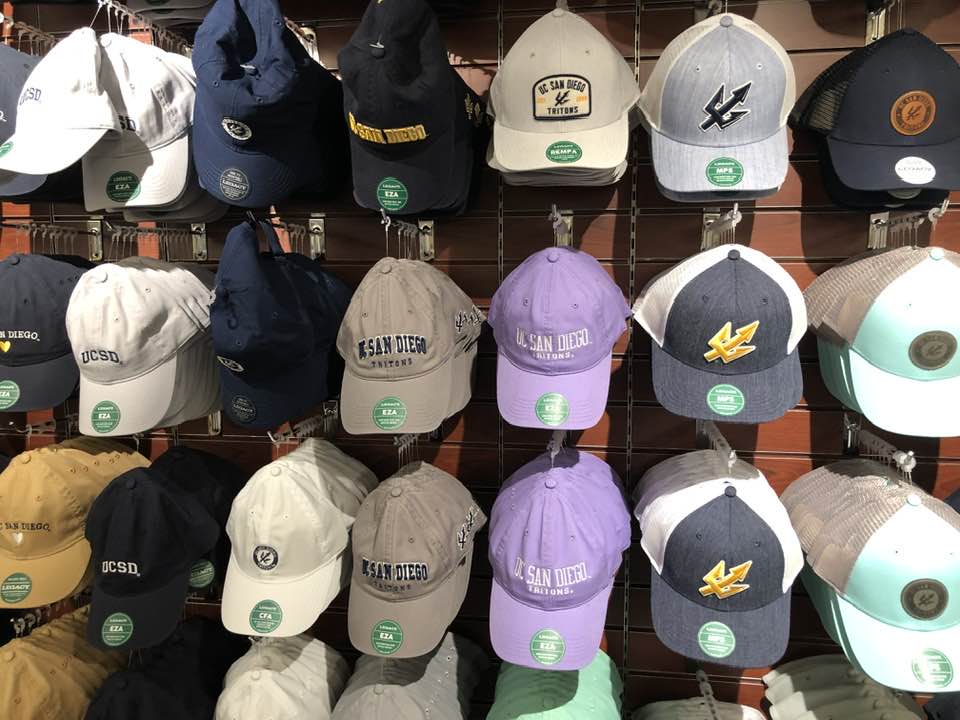 Our paper was called the “Triton Times,” later The UCSD Guardian. We couldn’t have imagined that print would be at risk of going the way of La Jolla’s eucalyptus trees. Back then, our treehouse was in a building called Blake Hall. I spent a lot more time there than in class. Now it’s an administrative office. Plus over the last 50 years, as far as I can tell, it got a lot smaller. We veterans nevertheless have our friendships and tall tales. We usually tell some about our brilliant late friend Ed Simons, brother of my EpiscoPal Cecille Simons-Araya. Ed called his satirical column “Low Blows and Cheap Shots.” He called his two-tone Chevy Nova “the Colonel” and taught me to drink coffee at the Denny’s near the Del Mar fairgrounds.
Our paper was called the “Triton Times,” later The UCSD Guardian. We couldn’t have imagined that print would be at risk of going the way of La Jolla’s eucalyptus trees. Back then, our treehouse was in a building called Blake Hall. I spent a lot more time there than in class. Now it’s an administrative office. Plus over the last 50 years, as far as I can tell, it got a lot smaller. We veterans nevertheless have our friendships and tall tales. We usually tell some about our brilliant late friend Ed Simons, brother of my EpiscoPal Cecille Simons-Araya. Ed called his satirical column “Low Blows and Cheap Shots.” He called his two-tone Chevy Nova “the Colonel” and taught me to drink coffee at the Denny’s near the Del Mar fairgrounds.
In other news, our successors are still putting out a pretty good paper in print and online. I always say a prayer for young people who pick journalism and then stick with it as a vocation, since they will be our stewards of freedom, justice, and democracy. Or so we say.
